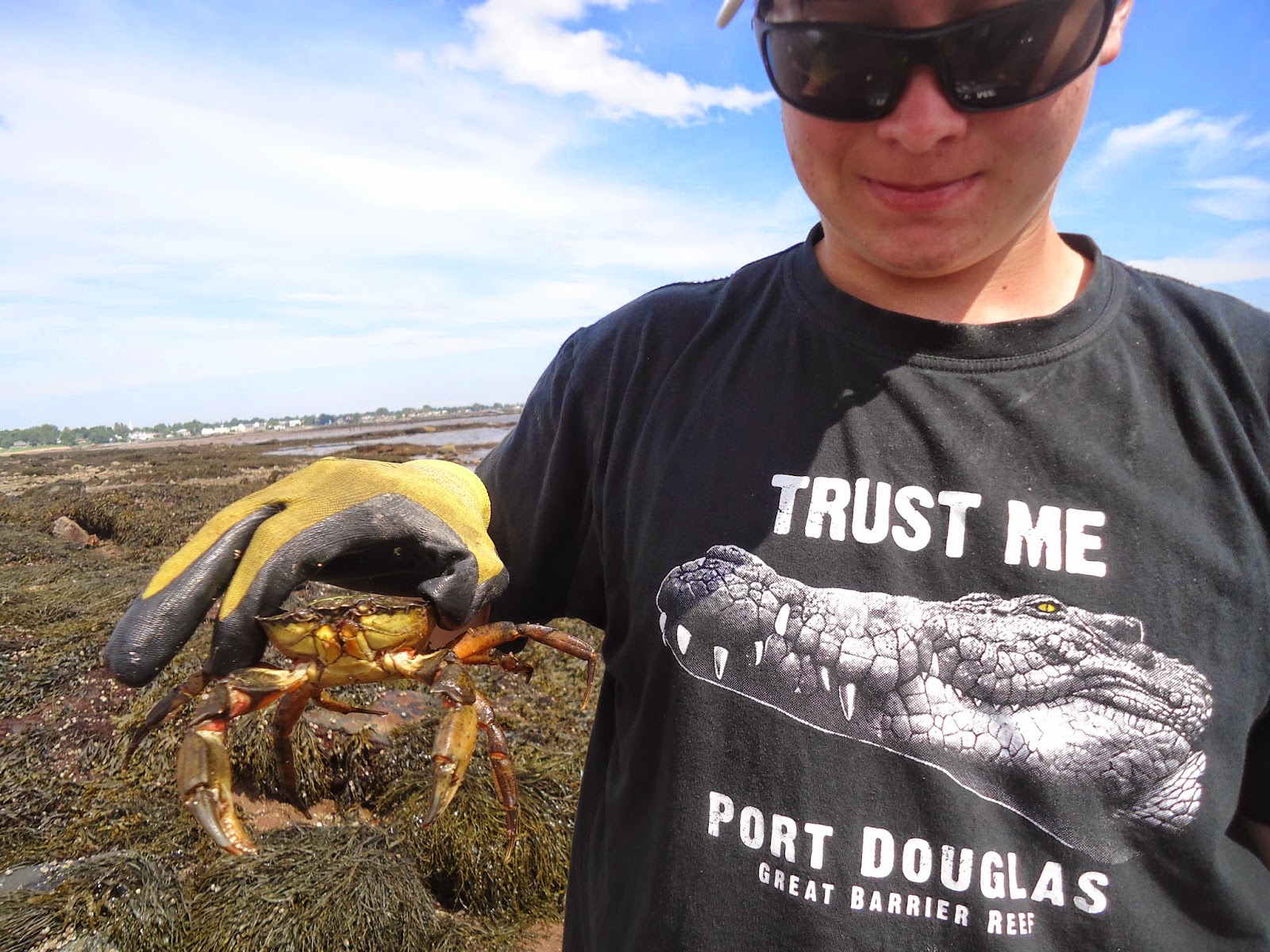This morning the students started the day with Barb exploring the link between art and biology. She walked them through some exercises that lead up to doing a contour drawing of a fish. Then the students did some drawings of the external anatomy of their fish all the while making observations about the adaptations of the fish. Using the external anatomy the students were able to determine where their species lived in the water column, what it ate, and if it was a fast predator or a sit and wait predator. The students then opened up the fish to look at the internal anatomy, such as the gas bladder, heart, and liver. They extracted the gills and otoliths to view with the microscopes. The really stinky part of the lab came when the stomachs were opened to see if there was still lunch inside.
Armed with buckets and shovels we walked across the peninsula to the Bar Road for the afternoon in search of what lives in the soft sediments at the beach. We found lots of interesting specimens including blood worms, clam worms, acorn worms, sand dollars, moon snail egg collars, and even squid eggs. It was a great day exploring the intertidal zone ending with a dip in the ocean to cool off for some of the students. They were amazed at how 'salty' the water was!
After supper this evening the group was headed into St. Andrews to play at the really cool community playground. And then maybe a stop at the ice cream shop.
Contour drawing of a hake.
The crabs were happy to munch on some of the dissected fish.
Drawing and labelling the external anatomy, including all the fins.
Gill removal.
Viewing alewife gills using the microscope.
The gut contents of one of the hake.
This alewife was a female as you can tell from the orange eggs.
Looking at the internal anatomy.
Otoliths (ear bones) can be used to determine the age of the fish.
A lovely spot for lunch!
The worm hunt is on!
Squid eggs on the beach.
The boys found some great worms...
...including this blood worm (notice the extended proboscis that is very red).
At one spot on the beach we had to be careful not to step on all the sand dollars.
The longest worm of the day.
Quick dip to cool off.




























































